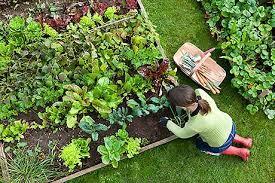Maranta prayer plants, with their captivating foliage and unique leaf movements, are cherished by indoor plant enthusiasts for their beauty and personality. Also known simply as Maranta plants, these botanical wonders are renowned for their striking patterns and their tendency to fold their leaves upwards in the evening, resembling hands in prayer. If you're eager to cultivate the charm of Maranta prayer plants in your own indoor sanctuary, understanding their growth requirements and care techniques is essential.
Unveiling the Beauty of how to grow maranta plant:
Before delving into the specifics of growing Maranta prayer plants, let's take a moment to appreciate their distinctive features. Maranta plants, scientifically known as Maranta spp., are prized for their ornate leaves adorned with intricate patterns of stripes, spots, and veins. Their unique leaf movement, known as nyctinasty, adds an element of dynamism to indoor spaces, making them a popular choice for plant lovers seeking both beauty and intrigue.
How to Grow Maranta Prayer Plants:
Growing Maranta prayer plants is a rewarding experience that requires attention to detail and a nurturing touch. Here's a comprehensive guide on how to cultivate these botanical treasures:
Light Requirements:
Maranta prayer plants thrive in bright, indirect light. Place them near a window where they can receive plenty of filtered sunlight throughout the day. Avoid exposing them to direct sunlight, as this can scorch their delicate leaves. If natural light is limited, consider supplementing with artificial grow lights to ensure optimal growth.
Temperature and Humidity:
Maintain a consistent temperature range of 65-75°F (18-24°C) to keep Maranta prayer plants healthy and thriving. Additionally, provide adequate humidity by placing a tray filled with water and pebbles beneath the plant or by using a room humidifier. This mimics the humid conditions of their native tropical habitats and prevents leaf browning or curling.
Soil and Potting:
Plant Maranta prayer plants in a well-draining, peat-based potting mix enriched with perlite or vermiculite to improve aeration and moisture retention. Choose a pot with drainage holes to prevent waterlogging, which can lead to root rot. Repotting may be necessary every year or two to refresh the soil and provide ample space for root growth.
Watering:
Keep the soil consistently moist but not waterlogged, allowing the top inch of soil to dry slightly between waterings. Water Maranta prayer plants thoroughly, ensuring that excess water drains freely from the bottom of the pot. Avoid overwatering, as this can lead to root rot and other moisture-related issues.
Fertilization:
Feed Maranta prayer plants with a balanced, water-soluble fertilizer diluted to half strength every 4-6 weeks during the growing season (spring and summer). Reduce fertilization frequency during the dormant winter months to prevent fertilizer buildup and promote healthy growth.
Conclusion:
In the world of indoor gardening, few plants offer the beauty and intrigue of Maranta prayer plants. With their mesmerizing foliage and distinctive leaf movements, they bring a touch of elegance and fascination to any indoor space. By following the guidelines outlined above on how to grow Maranta prayer plants, you can cultivate thriving specimens that enrich your home with their charm and vitality. So, embrace the allure of Maranta prayer plants and let them inspire awe and wonder in your indoor sanctuary.
